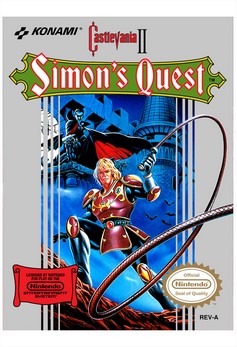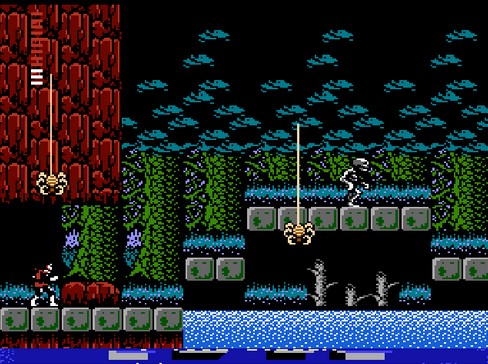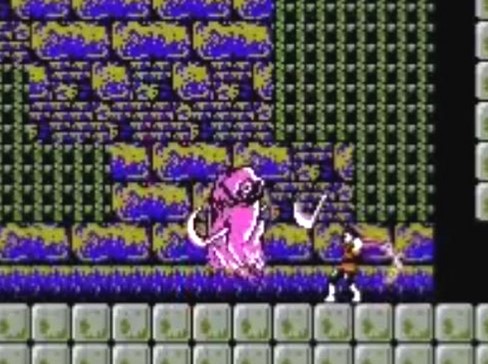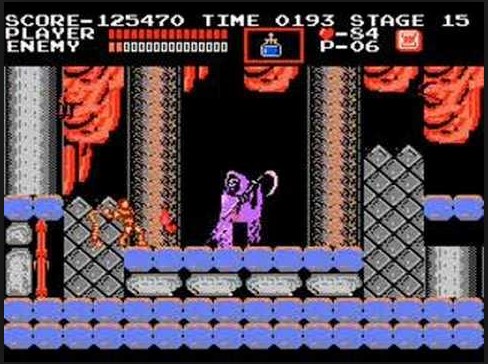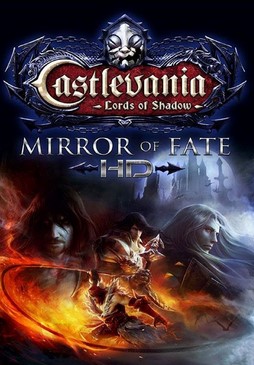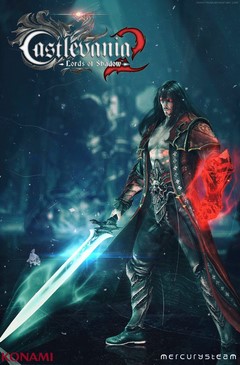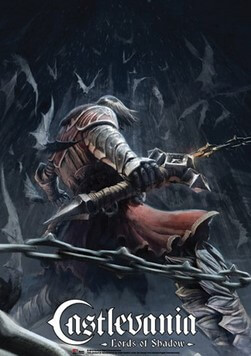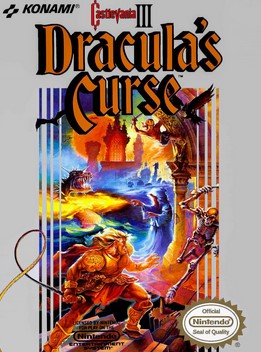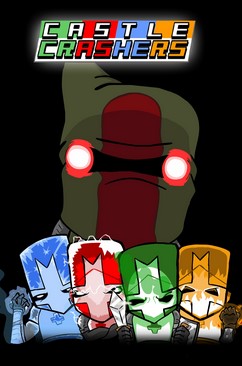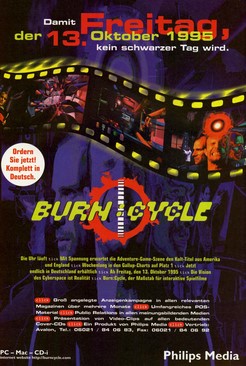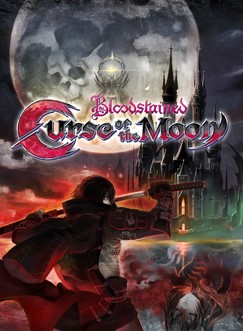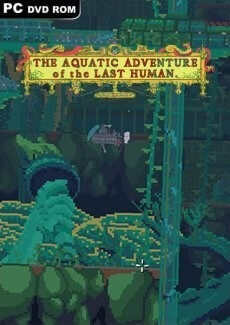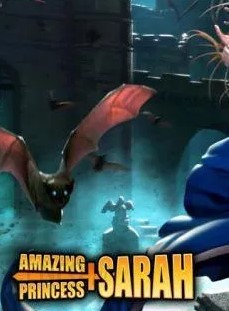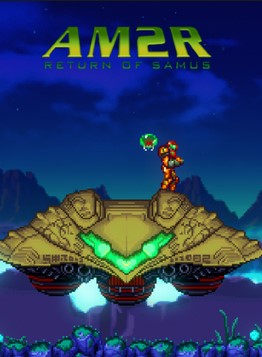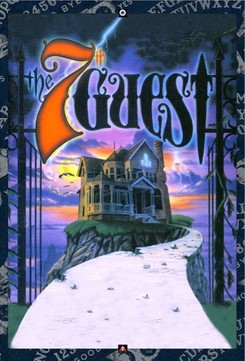Castlevania II: Simon's Questa is a platform-adventure video game produced by Konami. It was originally released for the Famicom Disk System in Japan in 1987 and for the Nintendo Entertainment System in North America in 1988. It is the second Castlevania title released for the NES, following the original Castlevania. Set sometime after the events of the first installment, the player once again assumes the role of vampire hunter Simon Belmont, who is on a journey to undo a curse placed on him by Dracula at the end of their previous encounter. With Dracula's body split into five parts, Simon must find and bring them to the ruins of his castle and defeat him.
Gameplay
The gameplay departs from the standard platforming genre of the first Castlevania for a game inspired by Maze of Galious. Similar to the nonlinear gameplay of Metroid, it featured RPG elements such as a world map which the player is free to explore and revisit. Simon, controlled by the player, can talk with villagers who will offer him clues or lies. He can also go to merchants who will sell items, either for fighting enemies or for traversing to otherwise unreachable areas. To pay for them, he must collect hearts, which are dropped by defeated enemies. In addition to the ordinary items in Simon's inventory, he can also purchase new whips in a few locations of the game. He begins with a standard Leather Whip, and can upgrade to stronger ones with each new purchase. Simon's Quest introduces an Experience Rating system, also found in role-playing games, which is increased by collecting hearts. After he finds a sufficient amount, his level and maximum health will increase with his Experience Rating.
The period of time in Simon's Quest cycles between daytime and nightfall, which has a prominent effect on the game and Simon's encounters. During the day, the enemies outside of villages in the game are weaker. At night time, they gain strength and inflict more damage to Simon's life points, though when defeated, they drop more hearts. The villagers and merchants in their respective locations are no longer available to talk to during night time, and are replaced by zombies.
Despite the departure from the previous game, there are elements from it that have remained. This includes the Magic Weapons, which are secondary weapons to Simon's whip. Each of them have a different use. Like most games in the series, some of these require the usage of hearts. One of them returning from Castlevania is the Holy Water, a small glass which can disintegrate walls that conceal hidden items. Some Magic Weapons make their first appearance in Simon's Quest, such as the Diamond, which attacks enemies while bouncing off any surrounding walls.
The objective of the game is to travel to the five mansions to find the body parts of Dracula's corpse, and an item known as the Magic Cross. The body parts can be utilized to support Simon in the game. For example, Dracula's Rib can be used as a shield to block any projectile attacks fired from an enemy. Finding all of the required items will allow Simon to clear the blockade in front of Dracula's castle to fight the last boss. After the player defeats Dracula, there are three possible endings based on the time taken to complete the game. The best ending is achieved when the player beats the game in eight game days.
Development and release
Simon's Quest was designed by Hitoshi Akamatsu, who also directed Castlevania and Castlevania III: Dracula's Curse on the NES. It was released on the FDS on August 28, 1987 in Japan. Originally titled Dracula II in Japan, Akamatsu came up with the title Simon's Quest for the game's release in Western territories. When asked if Metroid had any influence on the development of the game, Akamatsu instead cited Maze of Galious, another platform-adventure game by Konami that features puzzle solving.
It was eventually developed for cartridge release on the NES in North America on December 1, 1988, and in Europe on April 27, 1990. Because of hardware differences between the FDS and NES, there were changes between the versions designed for both consoles. The FDS version features a save system, as other FDS games also featured at the time. The NES version instead uses a password function to return to specific sequences from the game. The FDS medium had a data storage limitation of 862 kilobits of slow access, whereas bank-switching techniques and solid memory costs allowed cartridges to have comparable data space with much faster access. The developers used the space to improve the music quality for the game, adding percussion samples and re-arranging the melodies to take advantage of the technology. Other changes were made to correct several grammatical and spelling errors in the translation, such as rendering of the protagonist's name as "Simmon Belmont", in the game's endings. Most of the original artwork for Simon's Quest and other early Castlevania titles was lost during the Great Hanshin earthquake of 1995.
Simon's Quest has seen several re-releases. On November 16, 2002, Simon's Quest was a part of Castlevania and Contra: Konami Collector's Series in North America, a PC port of original Konami games. It has also been released on Nintendo's Virtual Console which is available for various platforms such as the Nintendo Wii. Simon's Quest is also exclusive to the North American and European versions of the NES Classic Edition, a miniature replica of the NES featuring many built-in games. It was once again released on the multi-platform Castlevania Anniversary Collection, a compilation of past Castlevania titles.
